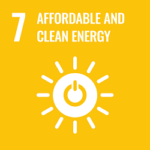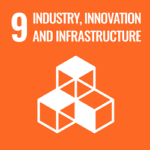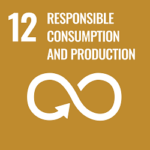Sustainable lab solutions: a case study on equipment sharing
In this blog Sam Driver, Lab Manger of Garstang 9 shares his labs' journey into equipment sharing and the benefits it has had both economically, environmentally, and for their research culture.

Do you have a piece of equipment that could benefit another research group? Are you curious to see what it’s capable of beyond your own experiments? Or perhaps there’s a niche instrument you’ve been wanting to try, but can’t justify purchasing for occasional use? Consider sharing your equipment. You might be surprised by the opportunities that arise from loaning it out—even for just an hour...
What is the challenge with lab equipment?
Access to specialized equipment is often central to the success of many research projects. The ability to generate large volumes of data in simple, reproducible ways can save both time and money—reducing wasted resources and minimizing the frustration of failed experiments. However, equipment is expensive—not only to purchase, but also to maintain and operate. These costs are compounded by the need for physical space and the time required to train users on complex systems.
Research facilities provide an invaluable service by offering access to high-end instruments that are typically beyond the reach of standard laboratories, such as confocal and electron microscopes, flow cytometers, and NMR machines. Yet, there remains a gap in support for smaller, more specialised instruments that, while less prominent, can be crucial for specific research needs but remain financially inaccessible.
Purchasing new equipment is difficult to justify, especially when factoring in the high upfront cost, ongoing service contracts, training requirements, and space limitations. Additionally, there is often reluctance to share privately owned equipment due to concerns about wear and tear, contamination risks, scheduling conflicts, and the potential for improper use.
How did we solve this problem?
On Garstang 9, we share a range of scientific equipment, most notably our Incucyte S3 live-cell imaging platforms. These machines are often idle during periods when experiments are being prepared or data is being analyzed, presenting an opportunity for broader use.
To maximize their utility, we offer access to external users under the condition that a member of our team provides training and supervision during use. For safety and research integrity, we do not permit imaging of biological agents that could compromise our ongoing work.
We arrange meetings with prospective users to understand their experimental needs, assess the materials involved, and coordinate scheduling. This approach allows us to accommodate as many users as possible while ensuring the equipment remains within operational limits and aligned with our research priorities.

What were the results of this trail?
On Garstang 9, equipment sharing is a well-established and essential practice. With 15 research groups operating in the same space, duplicating equipment for each group is neither practical nor efficient. Instead, this collaborative approach has enabled the collective development of a diverse and sophisticated equipment pool, supporting robust and varied data collection across a wide range of projects. It also demonstrates how shared resources can be both economically and environmentally responsible.
Sharing our equipment has brought significant benefits. Providing training to other users has exposed our team to a variety of experimental approaches and challenges we might not have encountered otherwise. It has also allowed us to explore underutilized features of our systems, enhancing our technical expertise. These interactions have fostered strong collaborative relationships with research groups across campus, giving us access to specialized equipment that would be difficult to justify purchasing independently, yet has added valuable depth to our research.
This model also contributes to the university’s sustainability goals. By maximizing the use of each piece of equipment, we reduce idle time and increase data output without increasing energy consumption. This efficient use of resources ensures that we generate more value from each instrument while minimizing our environmental footprint.
Testimonials
"Using the IncuCyte system has been instrumental in advancing my cancer research, specifically in studying the migration of MCF7 cells. The real-time, automated imaging and quantification features have allowed me to analyse the effects of various inhibitors and transient expression of my protein of interest with precision and efficiency. As migration assays are a cornerstone in characterizing cancer-related processes such as metastasis and wound healing, access to this equipment has been crucial. Without it, I would not have been able to include this important functional data in my thesis, as our home lab (LICAMM) lacks both the funds to repair our own system and the resources to replace it. The opportunity to share this equipment has not only supported my project but also exemplifies how collaborative resource-sharing can sustain high-quality research across departments." – Gaia Ferrarin, PhD Student, Faculty of Medicine and Health.
"Use of the IncuCyte allowed me to perform a scratch assay which demonstrated that ponatinib, the drug I was investigating, induced smooth muscle cell migration. This revealed the likely mechanism by which the drug induces vascular remodelling, the primary aim of our research. Without use of the IncuCyte, I would not have been able to carry out this assay and would only have half of the information I needed about the drug's effects. Using the IncuCyte was therefore essential in obtaining the information needed for my conclusion." – Olivia Glover-Talbot, Masters Student, School of Biomedical Sciences
Conclusion
While every approach has its challenges, the experience on Garstang 9 clearly demonstrates that the benefits of sharing equipment far outweigh the drawbacks. Opening access to lab equipment not only fosters collaboration and sustainability, but also provides valuable insights into both the equipment itself and one’s own research practices. Although it may initially seem like additional effort, the long-term advantages—both scientific and operational—are significant.
Access to equipment beyond your own lab can be essential for generating the robust datasets required for publication. By participating in collaborative research, you not only support the success of fellow researchers, but also gain exposure to new techniques and tools that can enhance your own work. In many cases, this shared approach leads to discoveries and efficiencies that would be difficult to achieve in isolation.
If every group in the faculty shared just one piece of equipment, we could significantly reduce duplication, free up valuable lab space, and lower energy consumption. Imagine the possibilities with that extra space and the funding we could redirect toward new research. So next time you see a piece of equipment sitting idle on your bench, ask yourself: Could this be transforming someone else’s research right now?
If you’re interested in learning more about how equipment sharing could benefit your lab, feel free to get in touch via Sam at S.Driver1@leeds.ac.uk or the Sustainability Service inbox at sustainability@leeds.ac.uk.
Sam Driver, Lab Manager, Garstang 9
United Nations Sustainable Development Goals
We use the United Nations Sustainable Development Goals (SDGs) as a framework to guide our activity. Our sustainable labs work is linked to the following SDGs:
- Goal 7: Affordable and clean energy
- Goal 9: Industry, innovation and infrastructure
- Goal 12: Responsible consumption and production
Find out more about our impact on the SDGs.




